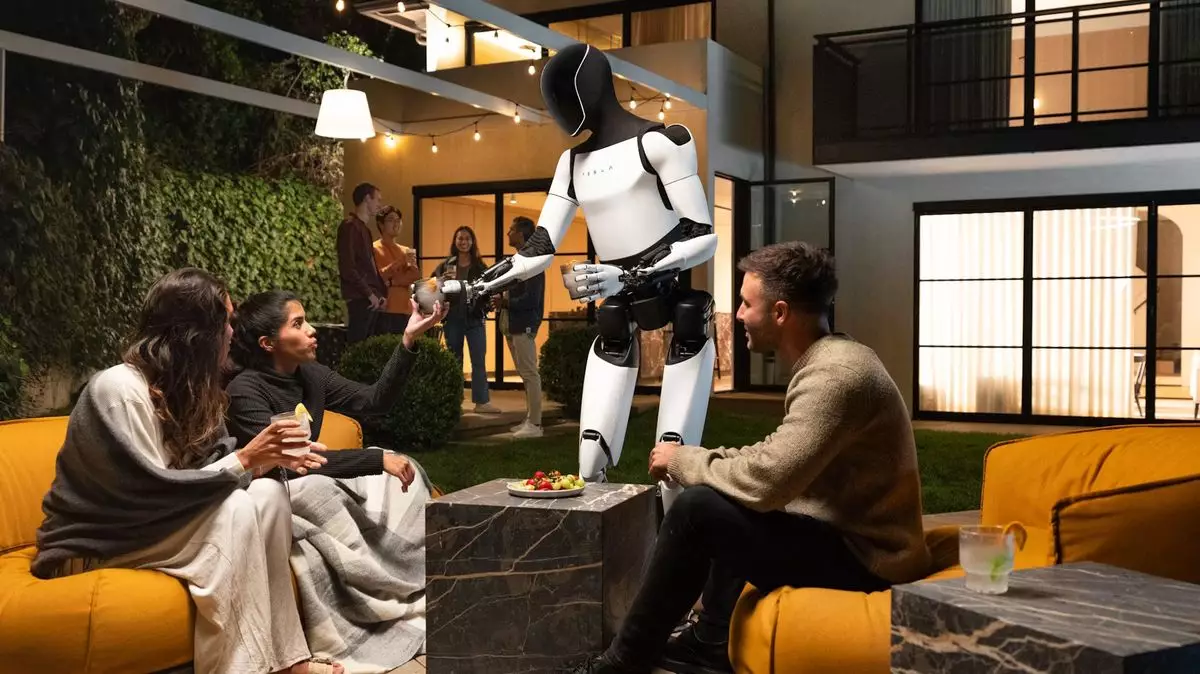Elon Musk, a name often associated with groundbreaking innovations, introduced the world to a humanoid robot in 2021. What initially appeared to be a revolutionary leap in robotics was met with a stark realization — it was merely a human in a suit. However, the conversation around robotics took a more intriguing turn when, a year later, a prototype emerged, showcasing a robot that could walk without collapsing. This tableau of evolving technology reached its most recent climax during the “We, Robot” event, where Musk unveiled a squad of these humanoid robots, aptly dubbed “Optimus.” Despite the buzz surrounding the event, an analysis of the claims made reveals a more complex and cautious narrative.
During his presentation, Musk made grand claims about the capabilities of the Optimus robots, stating, “It’ll be able to do anything you want.” He elaborated on a myriad of potential functions, from serving as teachers and babysitters to mundane tasks such as walking dogs and mowing lawns. In Musk’s vision, the Optimus robot was not just a technological marvel but a companion capable of adding value to daily life. He ardently proclaimed it would become “the biggest product ever, of any kind,” underscoring his belief that each person on Earth would yearn for their “Optimus buddy.”
However, while enthusiasm is undoubtedly ignited by Musk’s rhetoric, one must delve deeper into the implications of such proclamations. The history of Musk’s promises regarding groundbreaking technologies — whether related to Tesla’s self-driving cars, SpaceX colonization plans for Mars, or the Hyperloop concept — has been a mix of remarkable advances hindered by significant delays and unfulfilled expectations. Thus, it begs the question: Is the depiction of Optimus as a highly autonomous and capable robot a reflection of genuine innovation or merely marketing hyperbole?
At the event, one notable moment involved an Optimus robot “serving drinks” at a bar during an afterparty. However, reports surfaced indicating that these robots were not autonomously functioning as advertised. Instead, they appeared to be remotely controlled by Tesla employees, raising doubts about whether these machines were autonomous or simply puppets of human operators. This revelation punctuates a broader concern regarding transparency in tech presentations, especially when the demonstrated capabilities don’t align with public expectations.
Moreover, Musk notably refrained from asserting that these robots were powered by any autonomous artificial intelligence. Such an omission stands out, particularly given the context of an industry where true autonomy in robotics remains a significant hurdle. If these robots were genuinely autonomous, it seems probable Musk would have taken every opportunity to highlight it — yet, he did not. This lack of confirmation could indicate a strategic choice to retain an element of mystery or possibly suggest limitations in the technology that Tesla is not ready to disclose.
The prospect of autonomous bipedal robots enriching our daily lives — from grocery shopping to dog-walking — is certainly an appealing vision. Nevertheless, the timeline for such advancements often remains shrouded in speculation. Promises of self-driving cars becoming mainstream have been met with numerous technological and regulatory challenges. Comparatively, the journey toward developing bipedal humanoid robots capable of sophisticated tasks appears equally fraught with complications. The optimism expressed at events like “We, Robot” is met with skepticism as bridging the gap from ambitious prototypes to functional everyday applications takes time, resources, and precise engineering.
While the excitement generated by Tesla’s unveiling of the Optimus robots resonates widely, it is essential to temper this enthusiasm with a degree of realism. The gulf between Musk’s grand visions and current technological capabilities necessitates careful consideration. As observers and consumers, it is prudent to retain a critical eye on the developments emerging from Tesla and similar enterprises. The path to a future populated by humanoid robots may be a long one, requiring not just technical innovation but also a re-evaluation of expectations in the realm of robotics.


Leave a Reply